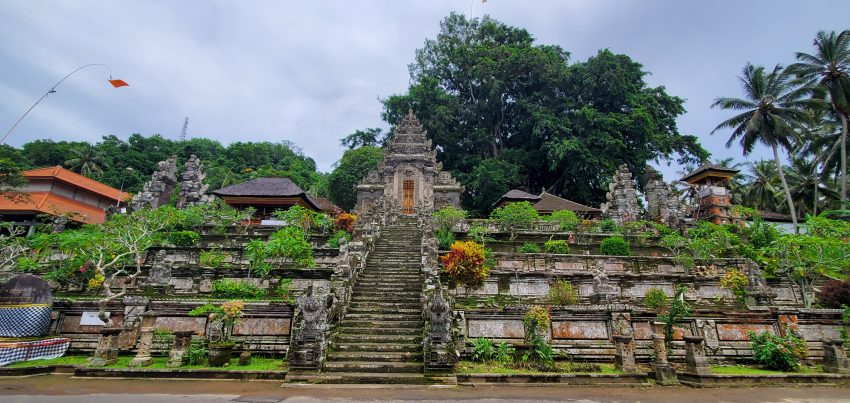We spent a mere two days on the island of Bali in December. Although the lure of beautiful beaches and calm resorts was strong, we chose instead to discover more about the history of this island during two full-day excursions.
Our first day explored the eastern side of the island from the port of Denpasar, which is the capital city and the gateway to the island of Bali. The bus ride was a destination in itself as the scenic countryside drive allowed us to explore smaller villages and larger cities along the route. We navigated narrow lanes up and down a mountain surrounded by fields flooded with water and green with rice in varying stages of growth. We were able to see a vast volcano in the distance. Everywhere we passed there were children waiting beside the road to wave at us. Their smiles were infectious.
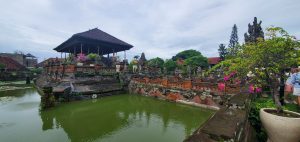
Our tour took us to three temples. The first was Klungkung Kertagosa, a building designed and built in 1710. The area surrounding it contains the beautiful Bale Kambang floating pavilion and the Kertagosa (Royal Court of Justice). The temple was ornate and festooned with statutes of Hindu Gods. The predominate religion in Bali is Balinese Hinduism, “a blend of Hinduism, Buddhism, Javanese and ancient indigenius beliefs”, unlike the rest of Indonesia which is mostly Muslim.
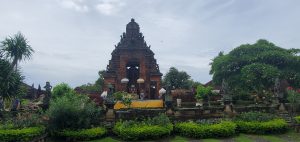
From there we visited the Pura Kehen temple complex, built in the 11th century. We stopped for a buffet lunch at a beautiful restaurant surrounded by rice fields. Our final stop was a visit to Puri Agung, a Royal Palace located near Ubud. The palace was originally built around 1570-1600 and was founded by the dynasty of King IGusti Ngurah Jelantik VIII. The peaceful surroundings included a mediation pool.
The sites on our second day were further afield so required more time on the bus, not that we really minded. We were able to see more of the island; villages, mountains, fields and the smiling faces of the locals as we passed.
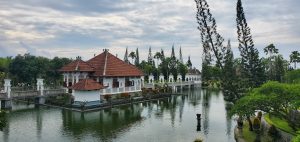
Our first stop was the Water Palace, a temple elevated over a pond and surrounded by peaceful gardens. It is owned by the Royal Family. We were welcomed with refreshments of tea and water as well as fascinatingly different fruits and sweets. Our hosts were very patient in explaining what each item was, like the fried yellow bananas and banana leaf wrapped pumpkin.
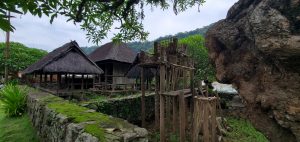
We then drove to the Tenegen Village. It is the Indonesian version of an open air museum designed to show how the people lived and villages were laid out in the past. It was fascinating to walk through despite the fact that most outbuildings were shops with very aggressive vendors.
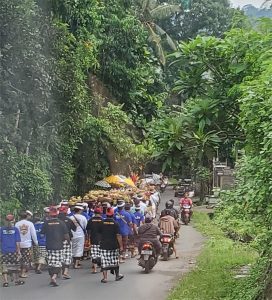 Our return trip was slightly delayed as we ended up behind a parade of worshippers on their way to temple with offerings. It was solemn and yet vibrant and colourful at the same time. We felt lucky to have witnessed this event.
Our return trip was slightly delayed as we ended up behind a parade of worshippers on their way to temple with offerings. It was solemn and yet vibrant and colourful at the same time. We felt lucky to have witnessed this event.
Our knowledgable guide provided plenty of information on each of the sites. I must admit I was so enthralled with the architecture, statutes and decorations that I often missed much of what was said. Reason enough for you to visit these amazing Bali sites yourself.
